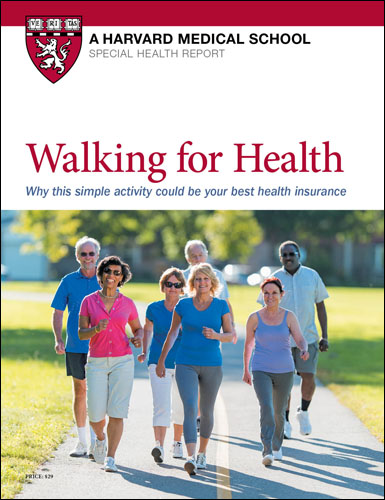Get your hiking muscles in shape
Tone your leg and abdominal muscles before heading out on the trail.
- Reviewed by Anthony L. Komaroff, MD, Editor in Chief, Harvard Health Letter; Editorial Advisory Board Member, Harvard Health Publishing

Trekking through nature is exhilarating and also gives your heart, lungs, and muscles a workout. Autumn's cooler temperatures make the outdoor activity especially inviting. Just make sure you prepare your muscles for the journey, especially if it's been a while since you've hiked on uneven terrain; you don't want to overdo it in the great outdoors and come back sore and sorry that you did.
Your hiking muscles
Hiking relies on many muscle groups and is especially taxing for the muscles in your legs and core (which includes abdominal, pelvic, and back muscles).
"Often when you're hiking, you have a prolonged uphill climb and a steady downhill descent. Going uphill, the workhorses that propel you forward include the calf muscles, the hamstrings in the back of the thighs, and the gluteal muscles in the buttocks. The core muscles provide stability. You rely on the same muscles going downhill, but you also need the quadriceps in the front of the thighs, which help act as brakes," says Dr. Sarah Eby, a sports medicine physician at Harvard-affiliated Massachusetts General Hospital.
Hiking risks
The challenges of hiking — not just going up and down hills, but also navigating uneven terrain strewn with rocks or fallen branches — are fraught with risk. "The most common injuries we see are twisted ankles or arm injuries from slipping and reaching out to break the fall," Dr. Eby says.
Tendon injuries are also common among hikers. "People often have weak gluteal muscles in the buttocks from too much sitting. Then they go for a hike and the muscles suffer from overuse. You can get tendon injuries where the muscles attach on the outside of the hip," Dr. Eby says. "We also see injuries in the Achilles tendon, which connects the calf muscle to the heel."
Avoiding injury
It takes muscle strength as well as good balance, endurance, and cardiovascular fitness to go hiking. Not sure you're up to it? Check with your doctor, especially if you haven't exercised in a while.
It's best to start with a daily walking regimen on level ground. Stretch your muscles afterward. Eventually, add two sessions per week of muscle strengthening. Gradually increase the amount of time you walk and the amount of weight you lift.
Place extra emphasis on your hiking muscles. "You don't need to do anything fancy," Dr. Eby says. "The go-to exercises for hiking work all of your leg, buttock, and core muscles at once, such stair climbing, lunges, squats, or sit-to-stands." (See "Move of the month.")
If you plan to use trekking poles, which help improve stability and take some stress off your legs, Dr. Eby recommends that you also spend time strengthening your shoulders with exercises such as planks (which also work your core muscles). Be sure to practice walking with the poles, so you're comfortable using them.
Move of the month: Sit-to-stand
Sit in a chair with your hands crossed on your chest or held out in front of you at chest level. Your feet should be flat on the floor, hip-width apart, and directly beneath your knees. Lean forward slightly and slowly stand up. Hold. Slowly sit down with control. Repeat 10 times. Exercise photos by Michael Carroll |
Hit the trail
Once you're ready to hike, Dr. Eby suggests starting on a trail that's rated "easy" (rather than "moderate" or "advanced"), with fairly level, less rocky terrain. She also recommends hiking for a much shorter distance than you're used to walking. "If you've been walking two miles around your neighborhood, choose a hike that's one mile, because walking on uneven terrain will be more intense. You don't want to end up exhausted," Dr. Eby says.
If you enjoy your first few hikes, slowly increase the distance and difficulty of subsequent treks. In between hikes, steadily increase the intensity and duration of your workouts. "It takes time and training to hike on more advanced trails," Dr. Eby says. "Be safe, and take your time reaching your goals."
For additional information about strength training, check out the Harvard Special Health Report Strength and Power Training for All Ages.
Image: © Zoran Zeremski/Getty Images
About the Author

Heidi Godman, Executive Editor, Harvard Health Letter
About the Reviewer

Anthony L. Komaroff, MD, Editor in Chief, Harvard Health Letter; Editorial Advisory Board Member, Harvard Health Publishing
Disclaimer:
As a service to our readers, Harvard Health Publishing provides access to our library of archived content. Please note the date of last review or update on all articles.
No content on this site, regardless of date, should ever be used as a substitute for direct medical advice from your doctor or other qualified clinician.














